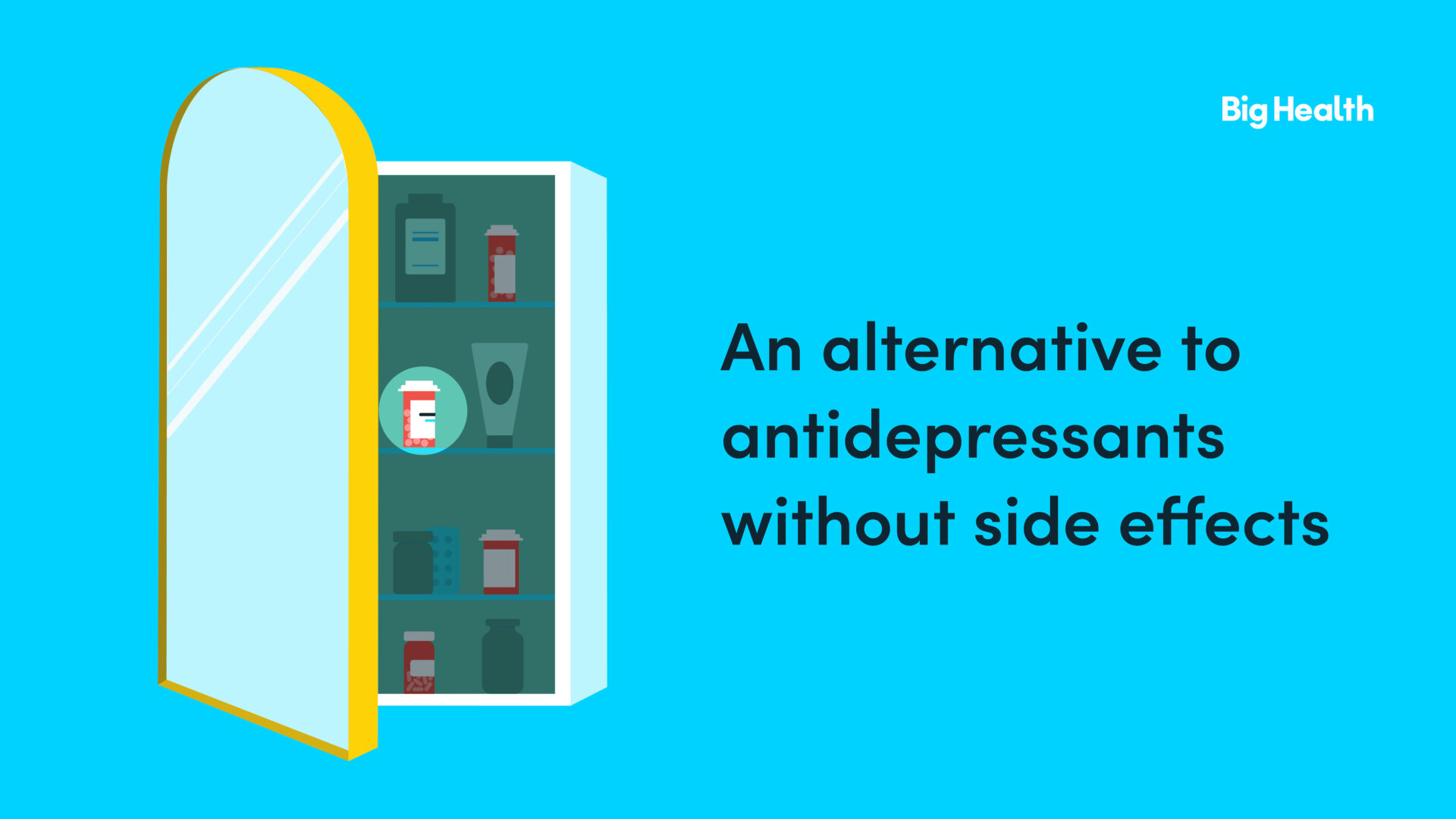SSRI: The best-known acronym
It’s hard to find a class of drug that’s had a bigger impact on mental healthcare than the selective serotonin reuptake inhibitors (SSRIs). Yep, that’s a mouthful. We’ll stick with “SSRIs” from here on out. The first SSRI, Prozac, made a huge splash when it hit the market in 1987, promising a treatment for depression with fewer side effects than earlier antidepressants — such as phenelzine, which could be fatal in combination with certain foods or other drugs. In the years that followed, Prozac and other SSRIs – like Zoloft, Celexa, and Lexapro – have made good on that promise. They’ve been joined by a similar class of drugs, SNRIs (selective serotonin and norepinephrine reuptake inhibitors, like Cymbalta or Effexor), to become among the most prescribed psychiatric medications in the world.
SSRIs and SNRIs* work by improving how certain brain neurotransmitters, specifically serotonin and norepinephrine, function to help regulate mood and energy. These chemicals are involved in managing many psychological states beyond depression, like worry, excessive irritability, and obsessive thinking. As a result, SSRIs and SNRIs are now widely used in the treatment of anxiety, including generalized anxiety disorder, panic attacks, social anxiety, and obsessive-compulsive disorder. With rates of anxiety and depression on the rise, it’s no surprise that these medications are so widely used.
An all-too-common story: worry on overdrive during the pandemic
Jelani is a 45-year-old human resources manager who’s always prided himself on being productive at work. But since the pandemic began, Jelani finds that he can’t stop worrying – about his family, his employees, and his health. He feels like he’s been on high alert for two years. And Jelani is in a difficult position: He’s supporting employees through the stress and challenges of COVID-19, but he has not sought help for himself. As he spends his days problem-solving for others, his worry and anxiety is causing him to procrastinate at work and snap at his kids. He’s also noticed worsening muscle pain in his shoulders, and he often feels he just doesn’t have the energy to meet his daily responsibilities.
When Jelani tells his doctor that his worry is getting in the way of his work and family life, his doctor tells him about the clinical guidelines for treating anxiety. He discovers that SSRIs and SNRIs effectively reduce symptoms of generalized anxiety disorder, like the hard-to-control worry Jelani has been experiencing. Even though these classes of medications are often referred to as “antidepressants,” they are one of the first-line recommendation treatments for both depression and generalized anxiety — as is cognitive behavioral therapy (CBT).
Why do all primary care doctors prescribe SSRIs and SNRIs?
SSRIs and SNRIs are so widely used that in a survey of primary care doctors, 100% reported prescribing them. This is for good reason: SSRIs/SNRIs have many advantages. They are generally safe and have fewer side effects than earlier psychiatric drugs — so patients find them more tolerable and easier to stay on. In addition to being evidence-backed, they’re affordable in generic form, and widely available. As a result, they can scale to meet the growing need for mental health treatment that’s in line with clinical guidelines.
What are the downsides of SSRIs and SNRIs?
Unfortunately, the benefits of SSRIs and SNRIs have to be weighed against their risks and unwanted side effects. Despite their advantages over older medications, SSRIs and SNRIs still cause side effects, leading some patients to stop taking them. For example, a significant percentage of antidepressant users complain of sexual dysfunction, such as reduced drive or enjoyment, which can continue even after stopping the medication. And even though SSRIs and SNRIs present lower risk than the older antidepressants, weight gain is still a common concern. In unusual cases, when combined with other drugs, SSRIs and SNRIs can contribute to a rare but potentially life-threatening condition called serotonin syndrome.
Plus, like all mental health medications, SSRIs and SNRIs affect everyone differently. And this class of medications can take weeks to start improving symptoms of low mood and anxiety. Further, people may experience withdrawal symptoms — such as anxiety, nausea, and fatigue — when they stop taking SSRIs and SNRIs.
Jelani’s road to recovery
Fortunately for patients who want options, SSRIs and SNRIs are not the only recommended first-line treatment for depression and anxiety. Evidence-based psychotherapy, such as cognitive behavioral therapy, is also a first-line recommended, gold-standard treatment. Jelani’s doctor tells him that he can try SSRI and SNRI medication, behavioral care, or a combination of both.
Jelani considers his choices. He’s excited that antidepressants such as SSRIs and SNRIs can improve workplace functioning, one of the areas where he’s been struggling. But he knows it could take a while to find a medication that’s a good fit, especially if one affects his weight or sexual functioning. So Jelani decides to work on his anxiety using multiple tools at once: He asks his doctor to prescribe an SSRI or SNRI, and point him towards behavioral care.
Before safe and effective digital therapeutics, Jelani’s doctor would have had no choice but to refer him to face-to-face psychotherapy — where waitlists are months long, and overwhelmed therapists are turning clients away. Fortunately, Jelani’s doctor knows that evidence-based care can be just a click away. He tells Jelani about Daylight, a fully-automated, research-backed digital therapeutic for anxiety that can teach him proven cognitive and behavioral skills to manage his anxiety. Armed with effective care, whenever or wherever the need arises, Jelani has hope that he’ll be feeling less worried and more productive soon.
*SSRIs and SNRIs work the same way: by preventing brain chemicals from being reabsorbed, so they’re circulating at higher levels. The main difference is that SSRIs affect serotonin, whereas SNRIs affect both serotonin and norepinephrine. Both of these chemicals affect mood and anxiety. SSRIs and SNRIs are both effective for treating depression and anxiety.
Disclaimer: In accordance with FDA’s current Enforcement Policy for Digital Health Devices for Treating Psychiatric Disorders During the Coronavirus Disease 2019 (COVID-19) Public Health Emergency, for patients aged 18 years and older, who are followed by and diagnosed with insomnia disorder or generalized anxiety disorder by a medical provider, Sleepio and Daylight can be made available as an adjunct to their usual medical care for insomnia disorder or generalized anxiety disorder, respectively. Sleepio and Daylight do not replace the care of a medical provider or the patient’s medication. Sleepio and Daylight have not been cleared by the U.S. Food and Drug Administration (FDA) for these indications.
Disclaimer: In the UK, Sleepio and Daylight are CE marked medical devices available for the treatment of insomnia disorder and generalized anxiety disorder, respectively


